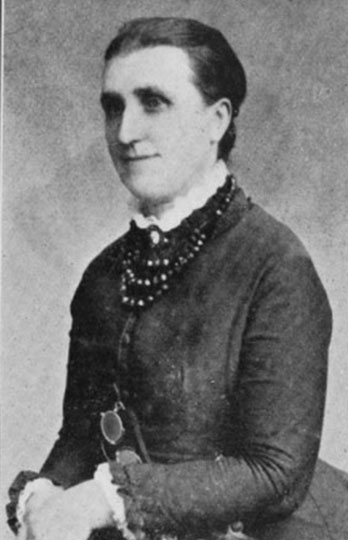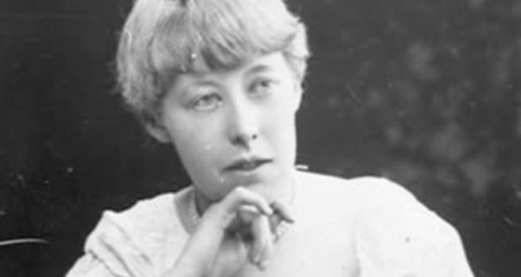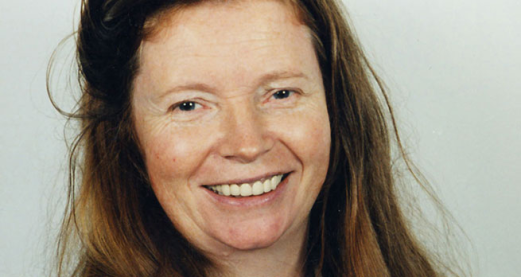 Ellen O’Leary was the sister of the Fenian activist John O’Leary (1830-1907). Like her brother, Ellen O’Leary was deeply involved in revolutionary nationalist circles in 1860s and 1870s. In the 1860s she worked to support the Irish Republican Brotherhood and published much poetry to promote the cause of radical nationalism. In the 1880s Ellen and John played a key role in the development of the Irish literary revival. Key to the revival was a desire to draw on the folklore and mythology of Ireland’s past to affirm national pride and create a fresh strand in Irish culture. In particular, the storytelling traditions of Ireland were seen as a powerful resource for nationalist writers.
Ellen O’Leary was the sister of the Fenian activist John O’Leary (1830-1907). Like her brother, Ellen O’Leary was deeply involved in revolutionary nationalist circles in 1860s and 1870s. In the 1860s she worked to support the Irish Republican Brotherhood and published much poetry to promote the cause of radical nationalism. In the 1880s Ellen and John played a key role in the development of the Irish literary revival. Key to the revival was a desire to draw on the folklore and mythology of Ireland’s past to affirm national pride and create a fresh strand in Irish culture. In particular, the storytelling traditions of Ireland were seen as a powerful resource for nationalist writers.
‘A Legend of Tyrone’ (1887)
O’Leary’s ‘A Legend of Tyrone’ was first published in 1887 in the Catholic literary journal The Irish Monthly and then often anthologised, for example in W.B. Yeats’s influential 1888 collection Fairy and Folk Tales of the Irish Peasantry.
The Story
Below you'll find the poem ‘A Legend of Tyrone’. This is clearly an example of a narrative poem - a poem that tells a story. What happens in this tale? Try to summarise the plot in a few sentences.
Crouched round a bare hearth in hard, frosty weather,
Three lonely helpless weans cling close together;
Tangled those gold locks, once bonnie and bright--
There's no one to fondle the baby tonight."My mammie I want; oh! my mammie I want!
The big tears stream down with the low wailing chant.
Sweet Eily's slight arms enfold the gold head:
"Poor weeny Willie, sure mammie is dead--And daddie is crazy from drinking all day--
Come down, holy angels, and take us away!
Eily and Eddie keep kissing and crying--
Outside, the weird winds are sobbing and sighing.All in a moment the children are still,
Only a quick coo of gladness from Will.
The sheeling no longer seems empty or bare,
For, clothed in soft raiment, the mother stands there.They gather around her, they cling to her dress;
She rains down soft kisses for each shy caress.
Her light, loving touches smooth out tangled locks,
And, pressed to her bosom, the baby she rocks.He lies in his cot, there's a fire on the hearth;
To Eily and Eddy 'tis heaven on earth,
For mother's deft fingers have been everywhere;
She lulls them to rest in the low suggaun 1 chair.They gaze open-eyed, then the eyes gently close,
As petals fold into the heart of a rose,
But ope soon again in awe, love, but no fear,
And fondly they murmur, "Our mammie is here."She lays them down softly, she wraps them around;
They lie in sweet slumbers, she starts at a sound,
The cock loudly crows, and the spirit's away--
The drunkard steals in at the dawning of day.Again and again, 'tween the dark and the dawn,
Glides in the dead mother to nurse Willie Bawn:
Or is it an angel who sits by the hearth?
An angel in heaven, a mother on earth.
You may have got something along the following lines: three young children are left crying for their dead mother while their father is away drinking. During the night, their mother appears in the form of an angel to comfort and look after the children. At daybreak, the mother disappears.
O’Leary herself explained to her original readers that her poem was based on ‘The Legend of the Dead Mother, as told among the hills of Tyrone […] The tender mother and fond wife dies; the father in despair turns to drinking and neglects his little ones. The mother, still watching over her babies, comes back in the gloaming, again and again, to succour and fondle them’ (O’Leary 1887).
Questions of gender
Although Ellen O’Leary herself was active in public life and in revolutionary politics at that, her poems idealise women operating exclusively in the domestic sphere, in the roles of wife and mother.
Identify a few aspects of the poem that you think might be celebrating the traditional domestic role of the Victorian woman. Also, see if you can identify any aspects that suggest that the dead mother has unusual powers that are more disturbing or transgressive.
You may have found something like the following:
The ghostly mother who visits her children is clearly a gentle and nurturing figure who ‘rains down soft kisses’, tidies the children’s hair with ‘light loving touches’ and creates domestic comfort in the neglected cottage. The last line of the poem, ‘An angel in heaven, a mother on earth’, clearly refers to the Victorian ideal of the selfless wife and mother as the ‘Angel in the House’. Maternal and domestic duties are so compelling that the dead woman’s spirit cannot rest: though ‘an angel in heaven’, she is drawn back to earth to attend to the neglected home.
On the other hand, there is a spooky, uncanny atmosphere around the apparition of the dead mother as ‘the weird winds are sobbing and sighing’. Like any ghost, she has to disappear as the day dawns and the cock crows. Her white clothing or ‘raiment’ suggests angelic purity but also possibly something death-like and unnatural.
Furthermore, the legend emphasises that supernatural female power is needed to put right the problems following a mother’s death-- clearly the father of the family, ‘crazy from drinking all day’ is not able to protect his children. The possible implication here is that women are in some sense stronger than men. Think about the implications of this tension for O’Leary herself as a political writer and activist but one still working within the constraints of Victorian gender ideologies.
The form of the poem
While reading the poem to follow the plot, you probably noticed its use of strong rhyme and rhythm. The first and second lines of each stanza rhyme together, as do the third and fourth lines. You might also have noticed that there are four stressed syllables in each line, giving it four ‘beats’. So for example:
She lays them down softly, she wraps them around,
They lie in sweet slumbers, she starts at a sound!
The cock loudly crows, and the spirits away—
The drunkard steals in at the dawning of day.
This pattern of rhyme or rhythm would make the poem easier to memorise. Popular ballads in Ireland were sometimes written down but were often part of oral tradition, memorised, sung to music and spread by word of mouth alone. The ballad was an especially powerful form of expression in Irish culture, and from the middle of the eighteenth century or so, the ballad became a popular mode of political protest. It was often used to express nationalist aspirations as well as to tell traditional stories.
What we have in ‘The Legend of Tyrone’ is an example of a literary ballad-- that is, a poem composed by a literate person primarily for readers, but using certain forms and conventions of the traditional ballad.
A narrative or story-telling purpose and a memorable rhyme and rhythm are typical features of the ballad genre. Some other conventions of ballads are as follows:
- the story begins suddenly ‘in the middle of the action’
- the present tense is used to give the story an immediate impact
- the language conveys striking sense impressions
- there are vivid realistic details but the world of the story is somehow remote from ours
- we hear dialogue between the characters, abruptly presented and often using repeated phrases
- there is often a supernatural theme
Though contemporaries like W.B. Yeats praised O’Leary for having a simple, natural style it is clear she is artfully drawing on the literary conventions of the ballad tradition. Identify some examples of the features listed above in the ‘Legend’ to explore how O’Leary does this.
There are many examples you might have picked out. The second stanza opens with the desolate children crouched round the hearth-- there is no explanation for the mother’s death. Perhaps you noticed the prevalence of vivid details and images such as the ‘gold locks’ of the children, the ‘hard frosty weather’, the cot and the lit hearth in the cottage. There is echoing dialogue between Willie: ‘My mammie I want!’ and his older sister Eily: ‘sure mammie is dead’. You may have noticed that the supernatural plot is framed by the explanation that this is a tale now told by ‘old wives’ about a ruined cottage.
‘A Celtic Singer’
The Irish nationalist writer Charles Gavan Duffy (1816-1903) praised Ellen O’Leary as ‘A Celtic Singer’ He described her poems as ‘authentically Irish, always speaking the language and uttering the passions of the Celtic heart’ (Duffy, 1889). ‘A Legend of Tyrone’ can be seen as an example of what would come to be known as ‘Celtic Twilight’ writing. The ‘Celtic Twilight’ referred to a later-nineteenth-century movement which was part of the Irish literary revival. It celebrated myth, folklore and what was seen as the other-worldly mystery of the Irish past.
As well as defining the culture of Ireland’s past as attractive and powerful in its own right, the literary revival arguably offered its readers a refuge from the commercial, industrial pressures of modern Victorian society. Rural Ireland especially was felt to have retained rich imaginative traditions that had been eliminated elsewhere.
Look over the poem again. How does O’Leary function here as ‘a Celtic Singer’, appealing to an audience interested in the traditional Irish past?
‘To Ireland’
Certainly the emblem of Ireland itself as a powerful but self-sacrificing mother-figure was a popular one in nineteenth-century nationalist literature. O’Leary uses this in another of her ballads admired in patriot circles, ‘To Ireland’. The first stanza only is given here, but reading it might enable you to reflect further on O’Leary’s treatment of poetic form, nationalist themes and gender identity:
Oh! Ireland, mother Ireland, is it true the tale they tell?
That you shall reign a queen again; it makes my bosom swell
With hope, and joy, and tenderness, to think of you ma stor
Erect, triumphant, happy, free, as in the days of yore…


Rate and Review
Rate this article
Review this article
Log into OpenLearn to leave reviews and join in the conversation.
Article reviews